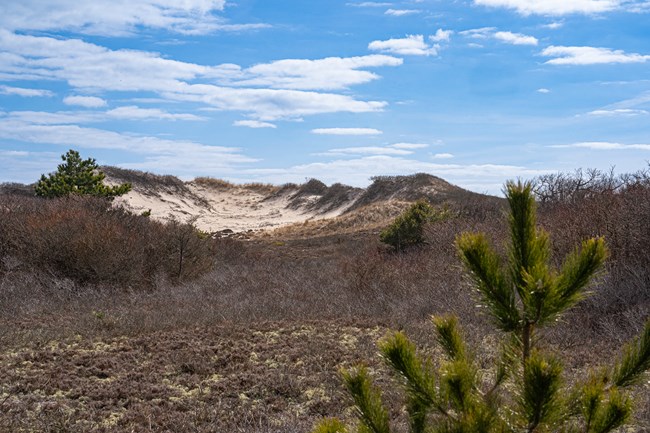
NPS Photo 
NPS Photo Dunes on Fire Island Sculpted by winds and strengthened by vegetation, sand dunes are a spectacular feature that are not only beautiful but crucial to the island's health. These dunes offer the first line of defense against wave action from storms. Some of Fire Island's primary dunes east of Watch Hill are as high as 40 feet. It can take decades for dunes this size to develop. Dunes form gradually over time, providing shelter from wind and salt spray for plants that grow on their leeward side. Dune vegetation, like American beachgrass, is important for the formation and stabilization of dune complexes on barrier islands. American beachgrass helps build dunes over time by trapping windblown sand. Plant parts above and below ground restrict sand movement and help secure the dune. You can help protect dune vegetation and, in turn, the dunes by keeping off the dunes. Behind some of the primary dunes lies a series of crescent-shaped secondary dunes, with a low interdunal swale habitat in between. The primary dune ridge (foredunes) lies adjacent to the shoreline. Secondary dune fields may lie further inland. Dunes may form anywhere that aeolian processes (wind transportation) occur. Dunes are critical to the natural evolution and resilience of barrier islands. These natural features provide much-needed protection to back-barrier habitats against severe wave, wind, and storm events. |
Last updated: March 7, 2024
